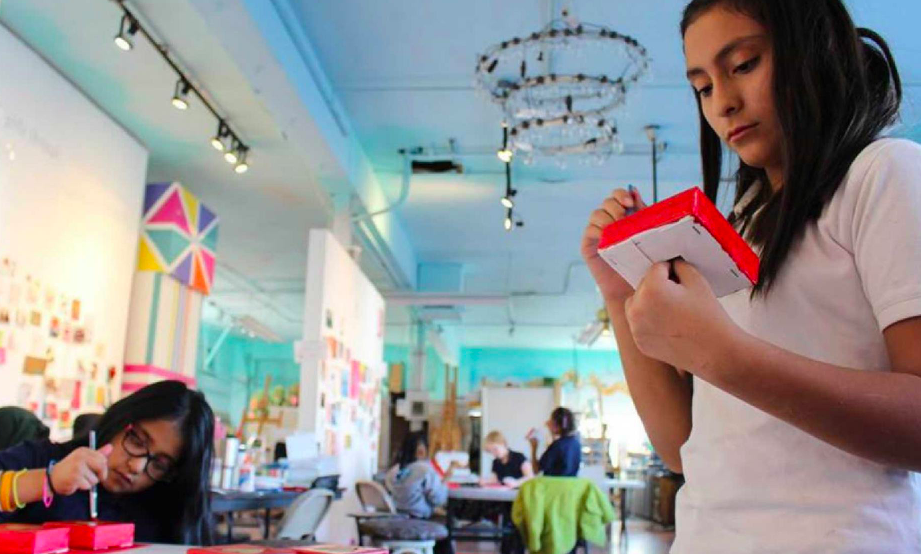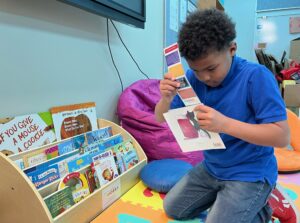Families, cities, and schools: Nonprofit and grassroots solutions
By: Jennifer Griffin
In part three of our series on Urban Living with Kids, we began a discussion on the challenges facing young families with children who desire an urban lifestyle when it comes to neighborhood schools. We also profiled an existing effort led by Tulsa Public Schools to provide a top-notch elementary school to serve both the middle-income families wanting to live in and around downtown as well as the low-income families currently residing there. Continuing with our focus on Tulsa, let me share two additional examples at differing scales–first, the work of a community-based non-profit, and second, a grassroots effort lead by parents–that are working toward creating great public schools in other urban neighborhoods of Tulsa.
Growing Together Tulsa: A model for nonprofit community-based organizations
Growing Together Tulsa is a non-profit community organization with a mission to create pathways for children to break the cycle of poverty and achieve economic success. It’s currently working in two neighborhoods in Tulsa. One of these neighborhoods – Kendall Whittier – is a predominantly Latino neighborhood with great urban and architectural bones. It is arguably the most mixed-use and walkable urban neighborhood in Tulsa, and includes shops, restaurants, art galleries, a movie theater, offices, light industrial workshops, a library, schools, churches, parks, a University, a mix of housing types, and even a full-service grocery store within a ½-mile walking radius. However, it also includes significant areas of concentrated poverty. Given these conditions, the neighborhood schools have severely struggled over the last few decades to meet the demands of the student body they serve.
A few years ago, Growing Together began its work in Kendall Whittier by focusing on improving the schools and the educational experiences for children in the neighborhood. Thanks to investments from and partnerships with local and national foundations, social agencies, higher education institutions, and faith communities, they have already seen significant improvements in the educational outcomes of the students and schools they serve.
However, spending an average of $3.5 million annually in the neighborhood, Growing Together soon realized that for the results of this effort to be sustainable, it needed to take a much broader approach. To do so, they decided to take groundbreaking action (literally), and recently unveiled their Theory of Change initiative, which includes efforts to improve the built environment and community vibrancy of the neighborhood. As a part of this effort, they are partnering both with Habitat for Humanity and with a local private developer to provide a significant amount of new housing in the neighborhood over the course of the coming years. One of their partners, the George Kaiser Family Foundation, has already built a mixed-use, mixed-income development there.
The goal of this effort is to attract a greater socio-economic mix of families to the neighborhood and to its schools. Over the past decade, the neighborhood has seen a number of urban pioneers move in, but most have not enrolled their kids in the public schools. Thus, while their presence helps to improve the neighborhood, they are not alleviating the challenges facing its schools.
Growing Together is working to change this by first improving the schools and the educational amenities that they provide (which it has already made great strides in doing) and second strategically targeting and attracting community-minded middle-income families who already have some stake in the neighborhood. To accomplish this, Growing Together – in conjunction with the Tulsa Public School District and their local private developer partner – will provide $4,000 in down-payment assistance toward the purchase of a new home to school teachers who want to live and work in the neighborhood.
The low-income children of the neighborhood will still be served by these improved neighborhood schools, and the influx of children from middle-income families will help to promote that excellence at a faster rate for all students and sustain that rate of progress over time. The benefits provided to kids who attend socio-economically diverse schools are well documented. Moreover, these benefits are bi-directional. A recent study by the Century Foundation reports that middle-income kids who attend an integrated and diverse socio-economic school display significant decreases in expressions of racism, significant increases in expressions of empathy, and greater social and emotional intelligence. Moreover, the study further shows that 96% of major employers today greatly value these skills when looking to hire. Thus, children from all positions within the socio-economic spectrum benefit from this diversity.
To learn more about Growing Together’s efforts, listen to Tulsa Public Radio’s interview with its Executive Director, Kirk Wester.



